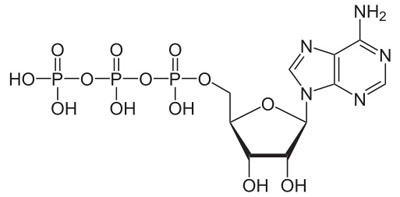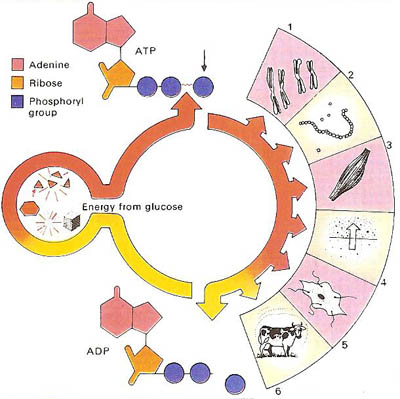adenosine triphosphate (ATP)

ATP molecule.

ATP plays a unique role in the cell, acting as a carrier between reactions that supply energy and those that use it, such as (1) cell regulation and division; (2) synthesis of proteins; (3) muscle contraction; (4) transport of materials into cells; (5) conduction of nerve signals; (6) regulation of body temperature.
Adenosine triphosphate (ATP) is the most important carrier of chemical energy in all terrestrial organisms; effectively, it is the energy currency of cellular metabolism.
ATP is a nucleotide consisting of adenine, D-ribose, and three phosphate groups which are linked together by covalent bonds. These bonds can undergo hydrolysis to yield either a molecule of adenosine diphosphate (ADP) and a phosphate or a molecule of adenosine monophosphate (AMP) and a pyrophosphate. In the process, a large amount of energy is made available which can be used for activities such as chemosynthesis, locomotion (including muscle contraction in animals), and the active transport of ions and molecules across cell membranes. The reactions bringing about these processes often involve enzymes to effect the transfer of the phosphate group to intermediate substrates within the cell.
ATP is regenerated by the rephosphorylation of ADP and AMP using the chemical energy obtained from the oxidation of food.


